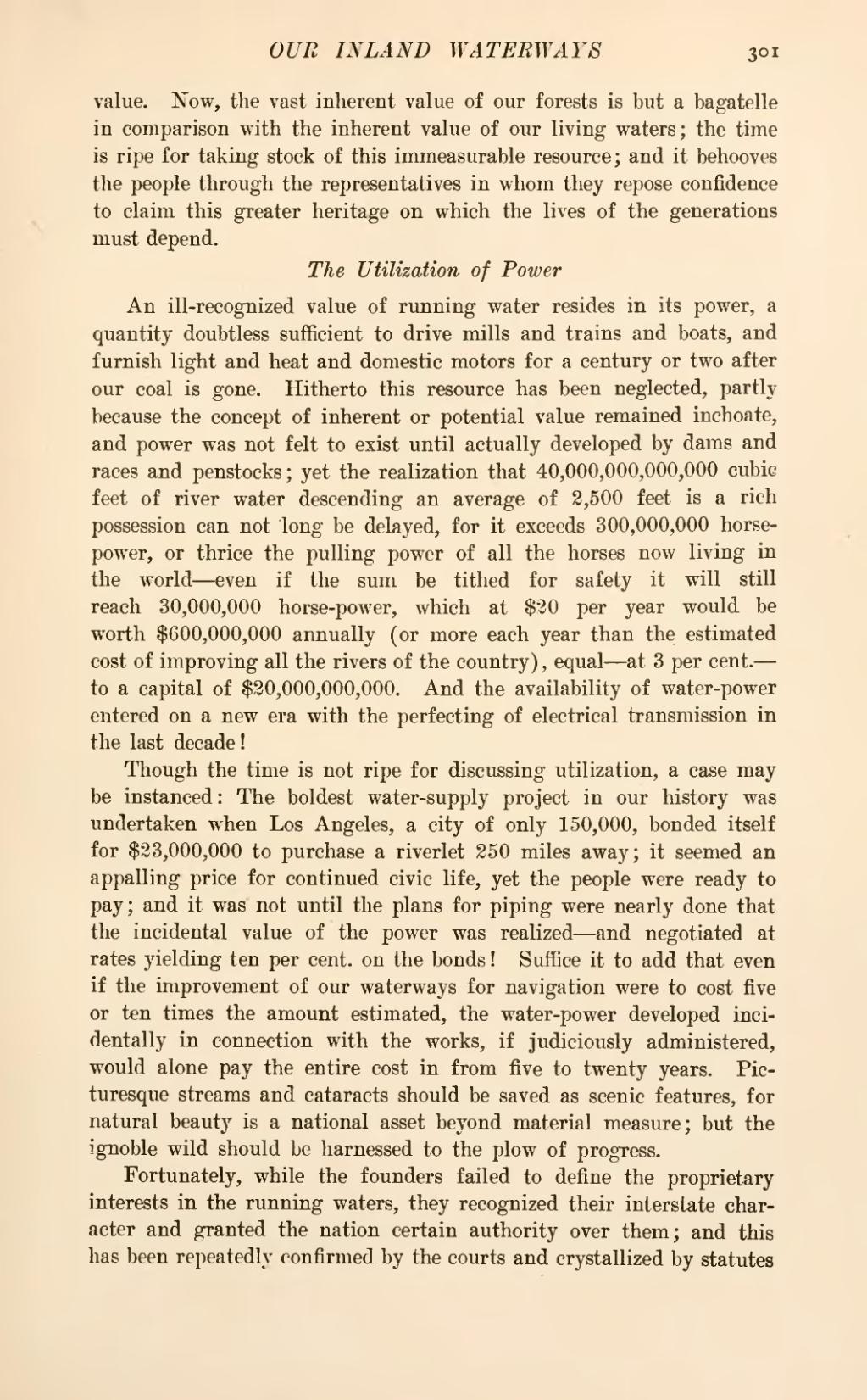value. Now, the vast inherent value of our forests is but a bagatelle in comparison with the inherent value of our living waters; the time is ripe for taking stock of this immeasurable resource; and it behooves the people through the representatives in whom they repose confidence to claim this greater heritage on which the lives of the generations must depend.
The Utilization of Power
An ill-recognized value of running water resides in its power, a quantity doubtless sufficient to drive mills and trains and boats, and furnish light and heat and domestic motors for a century or two after our coal is gone. Hitherto this resource has been neglected, partly because the concept of inherent or potential value remained inchoate, and power was not felt to exist until actually developed by dams and races and penstocks; yet the realization that 40,000,000,000,000 cubic feet of river water descending an average of 2,500 feet is a rich possession can not long be delayed, for it exceeds 300,000,000 horse-power, or thrice the pulling power of all the horses now living in the world—even if the sum be tithed for safety it will still reach 30,000,000 horse-power, which at $20 per year would be worth $600,000,000 annually (or more each year than the estimated cost of improving all the rivers of the country), equal—at 3 per cent.—to a capital of $20,000,000,000. And the availability of water-power entered on a new era with the perfecting of electrical transmission in the last decade!
Though the time is not ripe for discussing utilization, a case may be instanced: The boldest water-supply project in our history was undertaken when Los Angeles, a city of only 150,000, bonded itself for $23,000,000 to purchase a riverlet 250 miles away; it seemed an appalling price for continued civic life, yet the people were ready to pay; and it was not until the plans for piping were nearly done that the incidental value of the power was realized—and negotiated at rates yielding ten per cent, on the bonds! Suffice it to add that even if the improvement of our waterways for navigation were to cost five or ten times the amount estimated, the water-power developed incidentally in connection with the works, if judiciously administered, would alone pay the entire cost in from five to twenty years. Picturesque streams and cataracts should be saved as scenic features, for natural beauty is a national asset beyond material measure; but the ignoble wild should be harnessed to the plow of progress.
Fortunately, while the founders failed to define the proprietary interests in the running waters, they recognized their interstate character and granted the nation certain authority over them; and this has been repeatedly confirmed by the courts and crystallized by statutes
